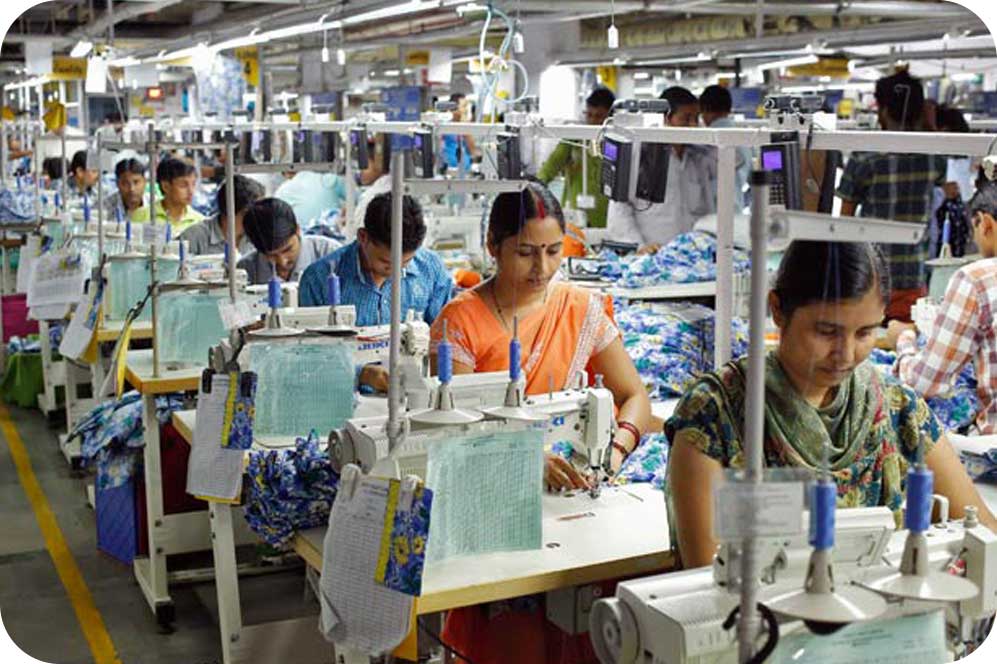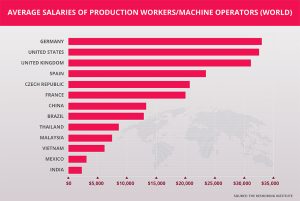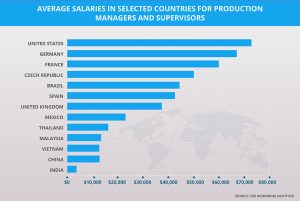
India among lowest-cost manufacturing hubs, beating China: Report
Research by US-based Reshoring Institute indicates manufacturing wages have risen in China, which is no longer the global low-cost labour market; India, Mexico and Vietnam have taken over

In a development that could augur well for the country’s economy, India has emerged as one of the lowest-cost countries, along with Mexico and Vietnam, leaving behind China, in terms of manufacturing wages.
This is according to data from the US-based Reshoring Institute, which indicates China is no longer the global low-cost labour market. The research has also cited how manufacturing wages have risen in China and what this means for companies going forward.
Reshoring Institute offers American firms reshoring research, networking, and implementation coordination to bring cost-effective manufacturing back to the US.
Global labour rates
The Reshoring Institute’s research focused on global labour rates in 12 countries, comparing the wages of production workers, machine operators, manufacturing supervisors, and managers.
Also read: India’s manufacturing activity at 13-month high in Dec amid strong demand
“The countries, including the United States, were selected for comparison, based on where Reshoring Institute clients were relocating their manufacturing from or to,” said Rosemary Coates, Executive Director of the Reshoring Institute. “European companies such as those located in France and Germany, along with the United States, have been considering moving out of China to other low-cost countries.”

The lowest-cost countries in the study are now India, Mexico, and Vietnam, according to the report. While there are even lower-cost areas of the world, such as Myanmar, Bangladesh and Africa, the Reshoring Institute “focussed its study on where most manufacturers are moving to now, after leaving China.”
Quality of labour
Coates pointed out that in some countries, there aren’t enough workers to fill the jobs at mega-assembly operations. “In the United States and Western European countries, worker shortages to fill existing positions have become a major problem,” she said, adding: “In countries such as India, China, and Mexico labour is relatively plentiful.”

The research further found that when it comes to managers and supervisors, India and Vietnam are better performers than China. “The prediction is that this will change in the near future, and place China closer to the middle of comparative countries,” it said.
Manufacturers opting for US, too
Interestingly, according to the research report, manufacturers are also heading to America despite significantly higher labour rates in the US market. “To be competitive in world markets and at home, US manufacturers must automate production and redesign processes to extract labour costs, and make manufacturing more efficient,” said Coates.
“When comparing manufacturing in America versus other countries, you must consider the total cost of ownership and include all costs such as logistics, quality, time-to-market, import duties, inventory carrying costs, and geopolitical risks,” she said. “Our clients are often surprised to find that when all costs are considered, American manufacturing can be competitive.”
Pandemic impact
The research also revealed how the pandemic has affected the manufacturing sector across the globe. “With worldwide shortages and supply chain disruptions, companies have changed how to source and manufacture parts, sub-assemblies, and finished products. A major factor in these changes is how much manufacturing workers are paid,” said the study.
“Our study has revealed that where in the world to manufacture is a complicated decision and involves a comprehensive analysis of labour costs, productivity, geopolitics, risk, where customers are located, and how markets are growing. With labour rates in China doubling over the past few years, companies are now considering moving back to America,” said Coates.


